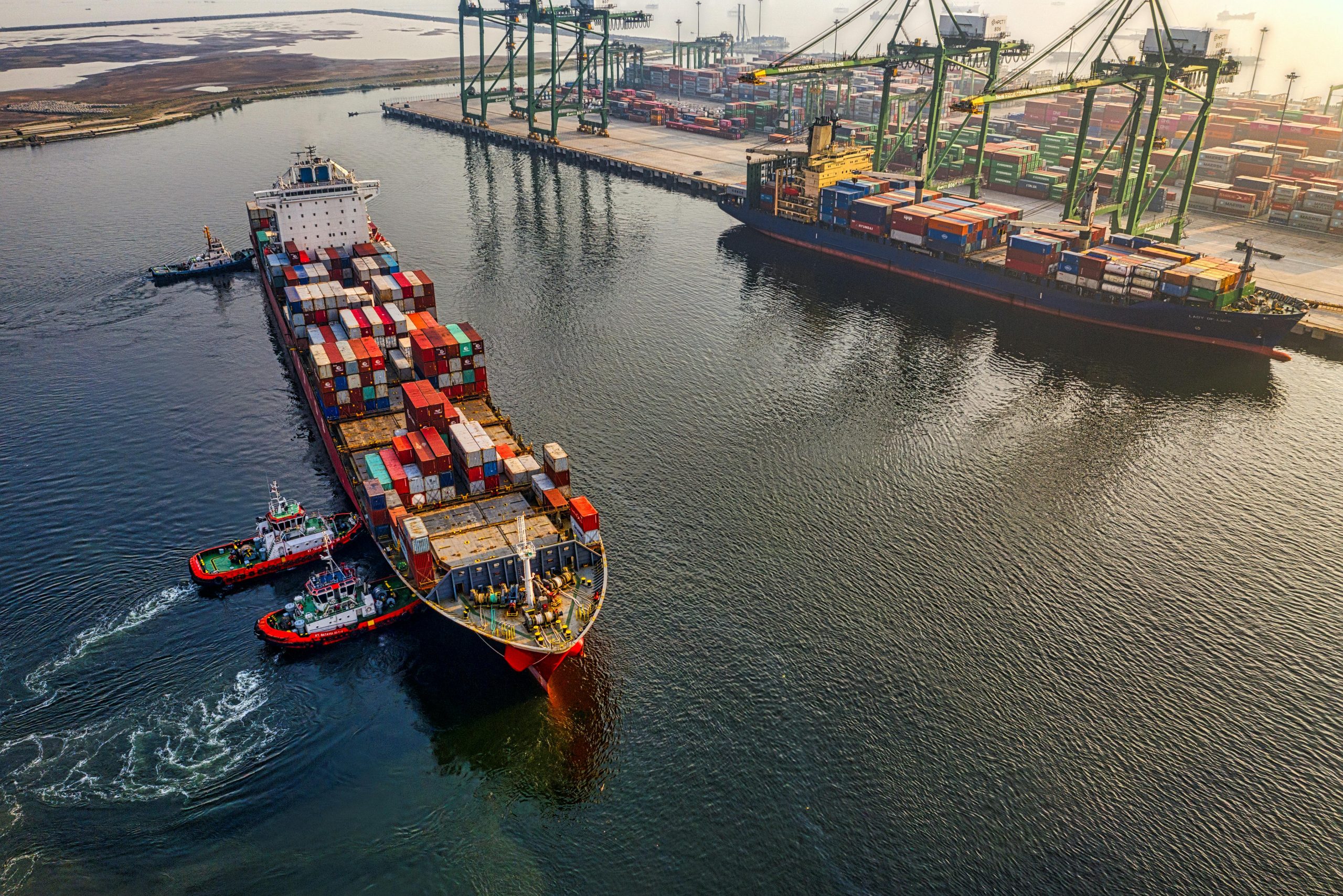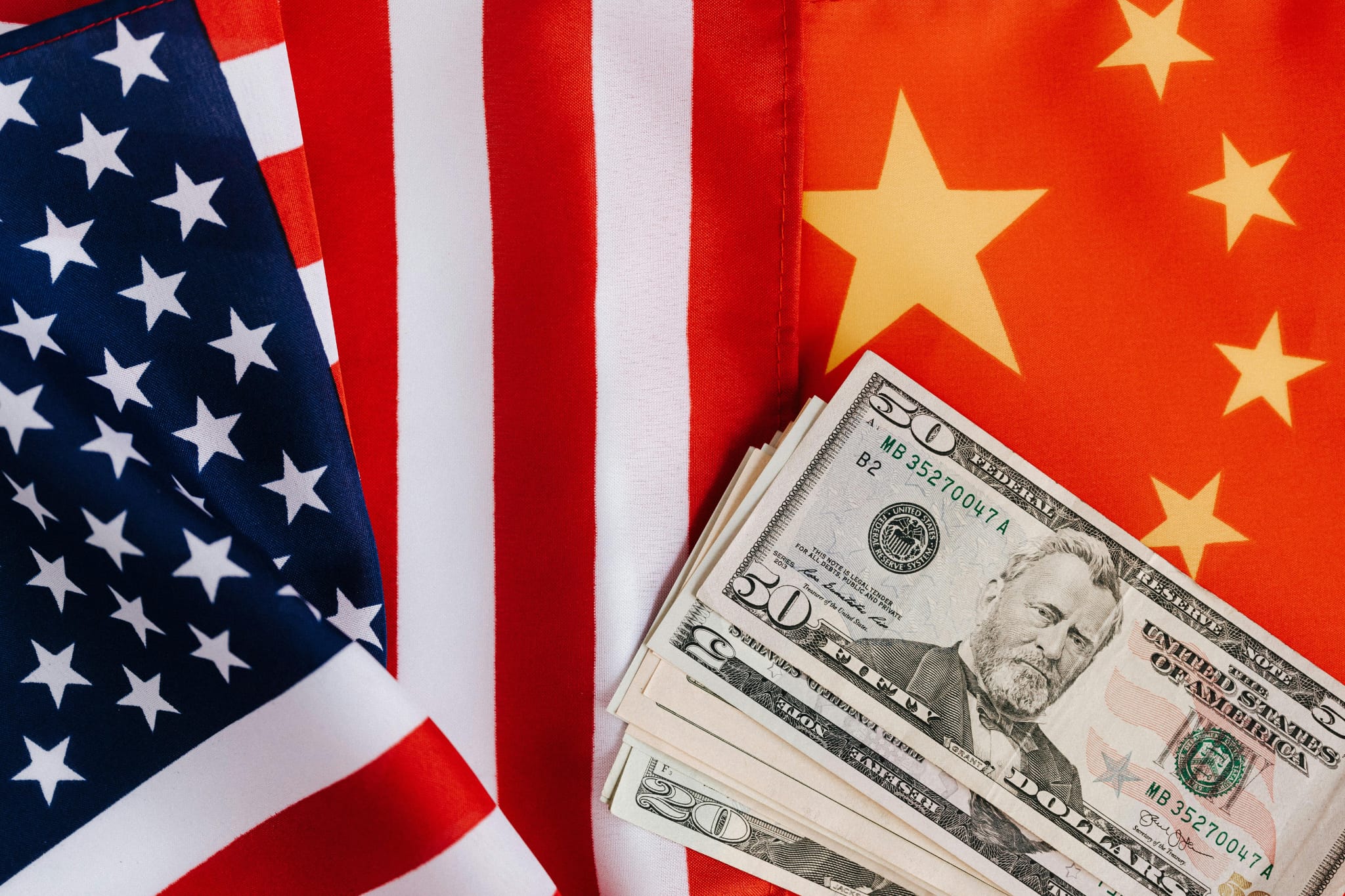By: Alberto Rodríguez Rodríguez
Member of the Department of Communication and Marketing
Bachelor's Degree in International Studies at UAM
The recent escalation in the trade war between the United States and China, which began during the second term of President Donald Trump, has had an unprecedented impact on the economies of both countries, reshaping global trade dynamics. This conflict, marked by unprecedented tariff increases, reflects a strategic struggle for economic and technological supremacy, with consequences that go beyond bilateral relations.
Context and Triggers
The 2025 trade war intensified with the imposition of U.S. tariffs on Chinese products, reaching up to 145% in some cases. This measure was partially justified by accusations related to fentanyl trafficking from China into U.S. territory. In response, China implemented 125% tariffs on U.S. goods, effectively shutting its market to these imports.[1][4]This exchange of sanctions not only reflects deepening trade tensions but also an economic decoupling that may prove irreversible.
Besides tariffs, the United States has imposed significant technological restrictions, limiting China’s access to advanced semiconductors and software with military applications. China, in turn, responded by restricting key exports such as critical minerals (germanium, graphite, and antimony), which are essential to U.S. tech industries.[3].
Economic Impact on the United States
The economic impact on the U.S. has been severe. The projected GDP growth for 2025 dropped sharply from 2% to 0.8%, while inflation rose to between 4% and 5%, raising concerns about stagflation—a simultaneous rise in prices and economic stagnation.[2]The manufacturing sector also shows signs of contraction; the ISM index fell to 49.0 in March, signaling a significant industrial slowdown.[2].
American consumers are facing higher prices due to tariffs on Chinese products, directly affecting domestic spending—a key component of economic growth. Additionally, sectors like the automotive industry have been particularly hard-hit; vehicle costs have risen by $2,000 to $5,000 per unit due to new tariffs on imported parts.[2].
Economic Impact on China
China is also facing significant economic challenges. Although its dependence on U.S. trade has diminished in recent decades thanks to diversification into Asian and European markets, sectors such as technology and U.S. agricultural exports remain relevant. Washington’s restrictions have pushed Beijing to strengthen strategic alliances with countries like Japan and South Korea.[1][3].
However, China possesses strategic tools to mitigate the economic impact. Its control over rare earths—essential materials for advanced technologies—allows it to pressure U.S. industries that rely on these resources.[3]Furthermore, Beijing has adopted aggressive monetary policies, such as devaluing the yuan, to maintain export competitiveness.[1].
The trade war reflects a broader strategic competition between the two powers. This conflict is accelerating the process of global economic decoupling, potentially leading to the formation of separate economic blocs with divergent technological standards.[3]The tensions are not limited to trade; they also affect critical areas like artificial intelligence and advanced semiconductors.
Geopolitically, this decoupling could reduce global economic efficiency by fragmenting international supply chains. Countries like Canada and Mexico have seen marginal benefits due to partial exclusion from U.S. protectionist policies[1]but other trade partners face economic uncertainty.
Future Outlook
Global economic projections indicate a reduction in world growth by about 0.3%–0.5% for 2025 due to this trade war, with OECD forecasts adjusting global growth to 3.1% in 2025 and 3.0% in 2026. This decline is directly tied to the unprecedented tariff escalation: the U.S. applied tariffs of up to 125% on $650 billion in Chinese imports, while China responded with 84% tariffs. These measures have shocked global supply chains, particularly in sectors like textiles (with 17% price increases) and electronics, where relocating production to third countries has faced structural limitations.
In the U.S., inflationary effects from the tariffs could raise the consumer price index by 0.5% to 1% in 2025, complicating the Fed’s monetary policy amid a projected economic growth of just 2.2% this year. Studies by Yale University estimate that the combined impact of all 2025 tariffs will reduce U.S. real GDP by 0.9 percentage points, with permanent losses equivalent to $180 billion annually. U.S. households are expected to face an average loss of $3,800 in purchasing power annually, disproportionately affecting lower-income brackets ($1,700 per year). China, though projecting a -1.3% GDP contraction, is deploying geoeconomic strategies to mitigate the impact: it is diversifying export markets (only 12.3% depend on the U.S.) and accelerating investments in domestic consumption and key industries. Nonetheless, its economy faces structural pressures: production surpluses in sectors like textiles (17% of its exports to the U.S.), a real estate crisis, and technological unemployment.
Geopolitically, the conflict accelerates the shift toward a multipolar order. While the U.S. experiences an erosion of influence among Asian allies, China strengthens regional trade agreements and compensation mechanisms in local currencies. The WTO projects an 80% reduction in bilateral trade, which would deepen global economic fragmentation and stimulate competitive trade blocs. This strategic decoupling, beyond trade, spans technological and financial spheres, redefining the axes of economic power for the coming decades.
Bibliography
[1] https://www.cepii.fr/PDF_PUB/wp/2025/wp2025-03.pdf
[2] https://discoveryalert.com.au/news/us-china-trade-tariffs-economic-impact-2025/
[3] https://www.max-security.com/resources/global-forecast/china-us-relations-2025/
[4] https://www.cnn.com/2025/04/10/business/us-trade-war-china-escalation-analysis-intl-hnk/index.html
[5] https://asiatimes.com/2025/04/us-china-trade-war-economic-fallout-and-strategic-realignment/
[8] https://www.reuters.com/breakingviews/us-china-trade-clash-risks-all-out-financial-war-2025-04-10/
[11] https://diplomatist.com/2025/03/17/the-geopolitical-impact-of-u-s-china-trade-war-in-south-asia/
[13] https://www.aljazeera.com/news/2025/4/9/trumps-tariff-war-whats-at-stake-for-chinas-economy
[17] https://www.controlrisks.com/riskmap/top-risks/global-trade-war
[18] https://edition.cnn.com/2025/04/11/politics/trump-china-trade-war-tariffs-strategy/index.html
[19] https://www.cnbc.com/2025/04/10/china-trump-tariffs-live-updates.html
[21] https://www.nytimes.com/2025/04/10/business/us-china-tariffs-trade-war.html
[22] https://responsiblestatecraft.org/china-tariffs/
[23] https://www.piie.com/research/piie-charts/2019/us-china-trade-war-tariffs-date-chart
[24] https://www.bbc.com/news/articles/c4g2089vznzo
[25] https://taxfoundation.org/research/all/federal/trump-tariffs-trade-war/
[26] https://www.brookings.edu/articles/what-beijing-wants-from-a-us-china-trade-war/
[27] https://www.bloomberg.com/explainers/us-china-trade-war



Leave a Reply